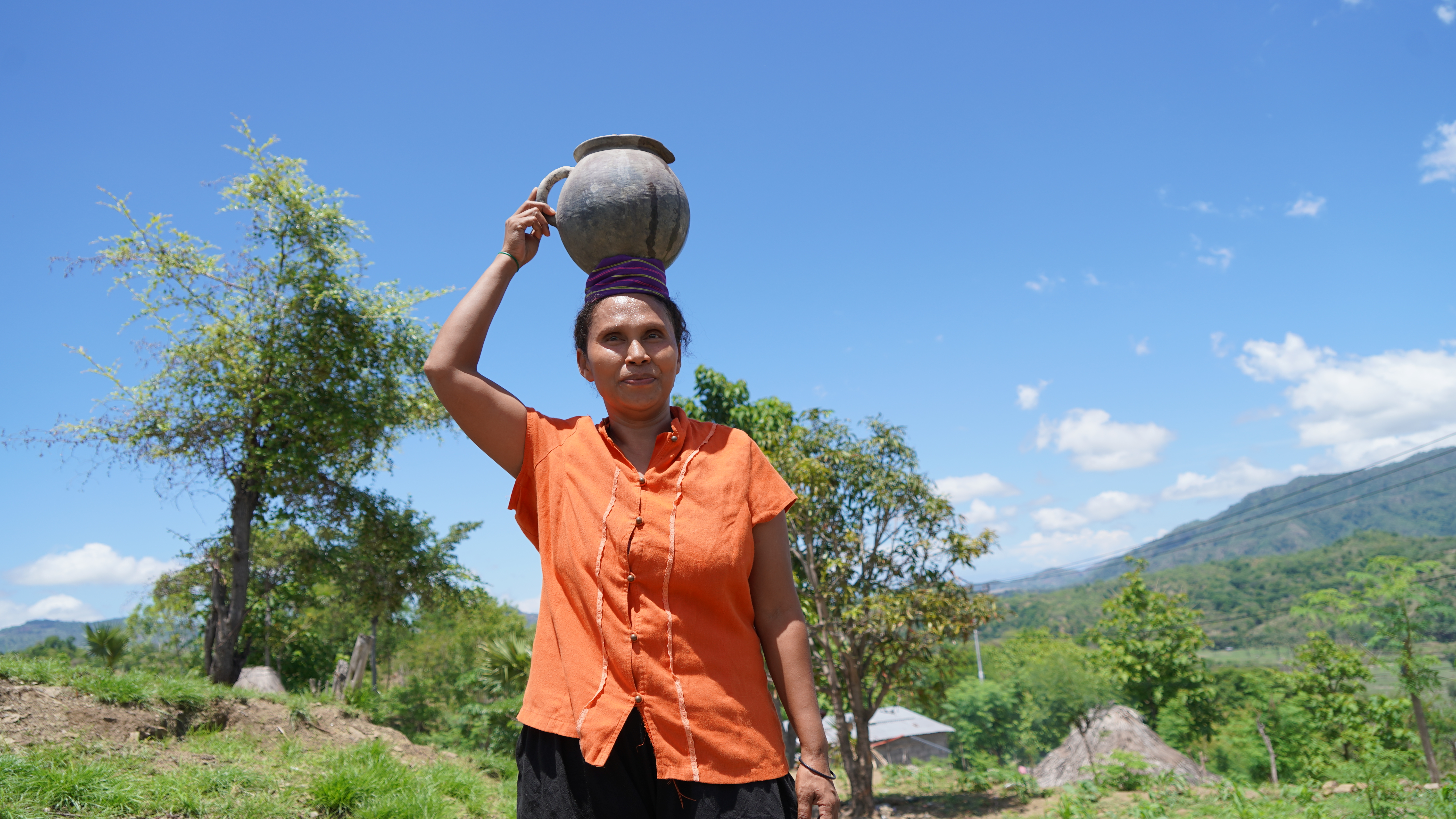The Success Story of Water Conservation in Oe-Cusse
“Doing more together: Giving life to springs through collective efforts.”
November 29, 2023

A women ih Oé-baha after fetching water
In rural Oé-cusse, where water is a big issue for most of the communities, Maria believes that reforestation is the only means to conserve and give life to the spring.
Water scarcity issues in Oé-Cusse, exacerbated by climate change, severely affect rural livelihoods. In areas where water supply is limited, springs like Oelfisot and Oel Let Ana serve as an important lifeline for the surrounding communities. Over the past years, the dry climate, lack of water from these springs, and degradation of the surrounding environment, have probe serious short- and long-term problems for the villagers.

The condition of the existing Oelfisot spring before implementation of the conservation program
Maria Simão, a 66-year-old woman shared her struggle to access clean water. ’’I depend on the Oelfisot spring for my family’s daily needs, but with the limited water debit of the spring, I struggle to secure enough water for cooking and drinking” she lamented. During the dry season, the water flow is reduced even further, leading to hours of waiting for just fill few jerricans of water. Maria had to fetch water three times a day spending about 6 hours in total on securing water. As they looked to the future, Maria and her community wondered how they could spare their children and themselves from the relentless quest for water.

Maria fetching water
Fortunately, both springs, the Oelfisot and Oel let Ana, once on the brink of depletion, have been regenerated thanks to the participation of local communities in UNDP's water conservation program. These efforts were concentrated in two distinct locations, encompassing the springs. With the implementation of innovative water catchment techniques, such as the construction of infiltration ponds and stone dams across the valley there was a substantial boost in the spring's water supply, bringing joy to the villagers. Maria excitedly shared “Now I can transport three jerrycans at once without the spring water debit becoming too low”. She also explained how this newfound abundance allowed her and her community to utilize the water for a multitude of purposes, from cooking, drinking, laundry, and crop and tree irrigation. “I even provide water for my chicken and goat” proudly beaming. This condition also teaches, trains communities to use water for really necessary.

After the water and soil conservation implementations the springs were full of water (Above, Oelfisot), The infiltration ponds constructed catch the rainwater and allow water to flow into springs so that the water discharge increases, and the community planted fruit trees (Oel Let Ana)
Maria further described how the program made her realize that the current water problems were linked to deforestation, land clearing, and forest burning. With support from A-FFOS and UNDP, the communities also embarked on a successful regreening effort, visualized in the photo story below. The success of the Oel Let Ana and Oelfisot water conservation programs is a testimony of the power of collective effort, nature-based solutions, and the commitment to securing the spring, a vital source of water for generations to come.

Degraded land before applying best practices (1), In the process of applying best practices: planting trees and constructing infiltration ponds and pits (2), Less than 1 year after applying best practices(3))

 Locations
Locations